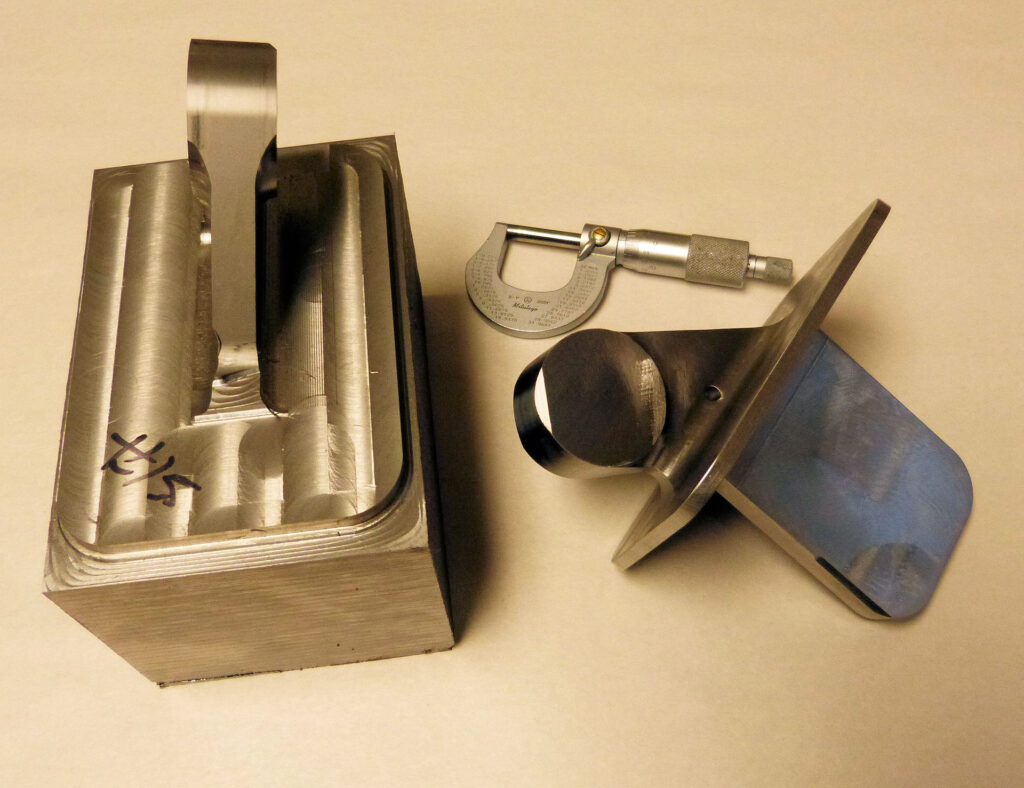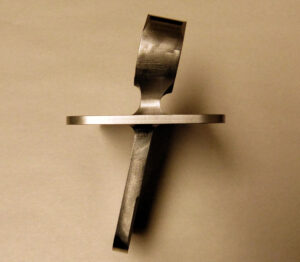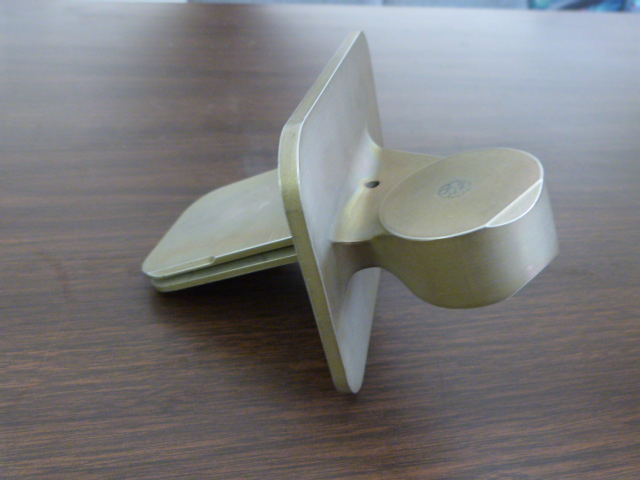
A better part of the summer has kept us busy cutting steel. About of ton and half of forged 4340 Aircraft steel. The kind that trashes carbide endmills in a couple of hours.
These parts start as 37 pound forged blocks and wind up at the end about 2.5 pounds. That a lot of chips.
And it pretty much kept our two 5-axis mills busy and noisy throughout the summer. And it kept me busy programming.
I can’t say the part was easy. There was a lot of tweaking of toolpath entries/exits, feed and speed adjustments, depth of cut optimization. Without attention to those details we would’ve wound up going through more 1 inch carbide endmills than I care to imagine.
Add to this the fact that since this is a structural aerospace fitting for for an E2-Hawkeye, there’s going to be a mirror image part. (Planes are symmetrical, right?). That means that almost as much work needs to go into a mirror image part. You can’t just use mirror imaging of toolpaths (a feature all good CNC’s have). In applications such as this it’s practically useless. That means new and separate programming.
Yet once dialed in it was running like a charm. Not that it didn’t require constant attention to details, such as:
- the .005 location tolerance of the intersection of the angular offset.
- The tight channel on the acute angle on the boss. There wasn’t much room to get a cutter through there.
- Constant attention to blends between rotations as cutters wear. It seems like that would be easy once offsets are dialed in, but anyone cutting 5-axis milling work would tell you that it ain’t so.


Fixturing a 5-axis machined part like this requires just as much planning and attention to detail as the part programs themselves:
- It must be accurate within .002″
- It must have good repeatbility
- It must have accurate locating for reloading
- It must be sturdy enough to stand up to cutting steel. Yet:
- It must be designed in a way to allow access to all areas requiring cutter access. Thoughtful clamp placement is essential.
- It must be versatile enough to hold both mirror image parts.
This part has been part a standard repeat item for us for many years, since long before we had 5-axis machining. What once took us up to 14 operations now can be accomplished in 3, thanks to our 5-axis mills.
I can’t wait until we get another one.
